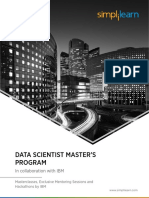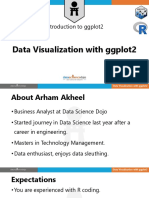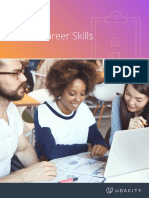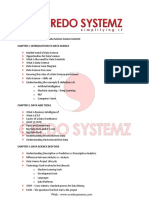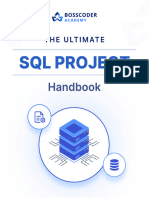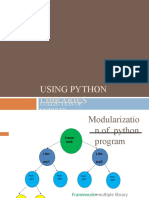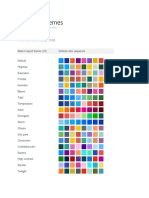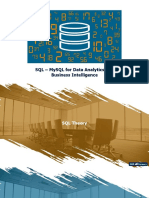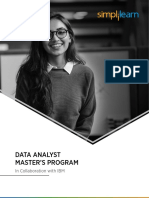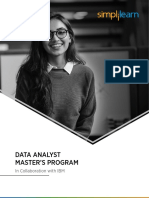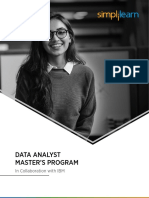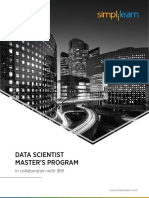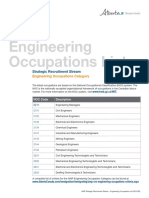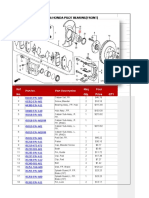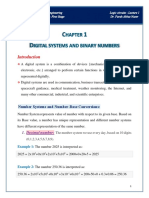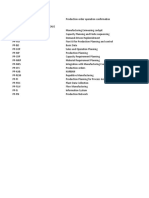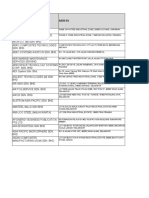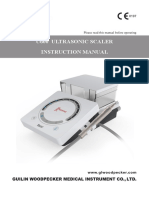0% found this document useful (0 votes)
235 views34 pagesData Analyst Masters Program
This document outlines a Data Analyst Master's Program offered in collaboration between Simplilearn and IBM. The program consists of 13 courses that will teach students skills in data analytics tools, techniques, SQL, Python, R, data visualization, statistics, and business analytics. Upon completing the program, students will earn industry-recognized certifications from IBM and Simplilearn and a portfolio-worthy capstone project. The program is suited for professionals looking to build skills in data analytics across various industries including IT, banking/finance, and marketing.
Uploaded by
BrumeCopyright
© © All Rights Reserved
We take content rights seriously. If you suspect this is your content, claim it here.
Available Formats
Download as PDF, TXT or read online on Scribd
0% found this document useful (0 votes)
235 views34 pagesData Analyst Masters Program
This document outlines a Data Analyst Master's Program offered in collaboration between Simplilearn and IBM. The program consists of 13 courses that will teach students skills in data analytics tools, techniques, SQL, Python, R, data visualization, statistics, and business analytics. Upon completing the program, students will earn industry-recognized certifications from IBM and Simplilearn and a portfolio-worthy capstone project. The program is suited for professionals looking to build skills in data analytics across various industries including IT, banking/finance, and marketing.
Uploaded by
BrumeCopyright
© © All Rights Reserved
We take content rights seriously. If you suspect this is your content, claim it here.
Available Formats
Download as PDF, TXT or read online on Scribd
/ 34
